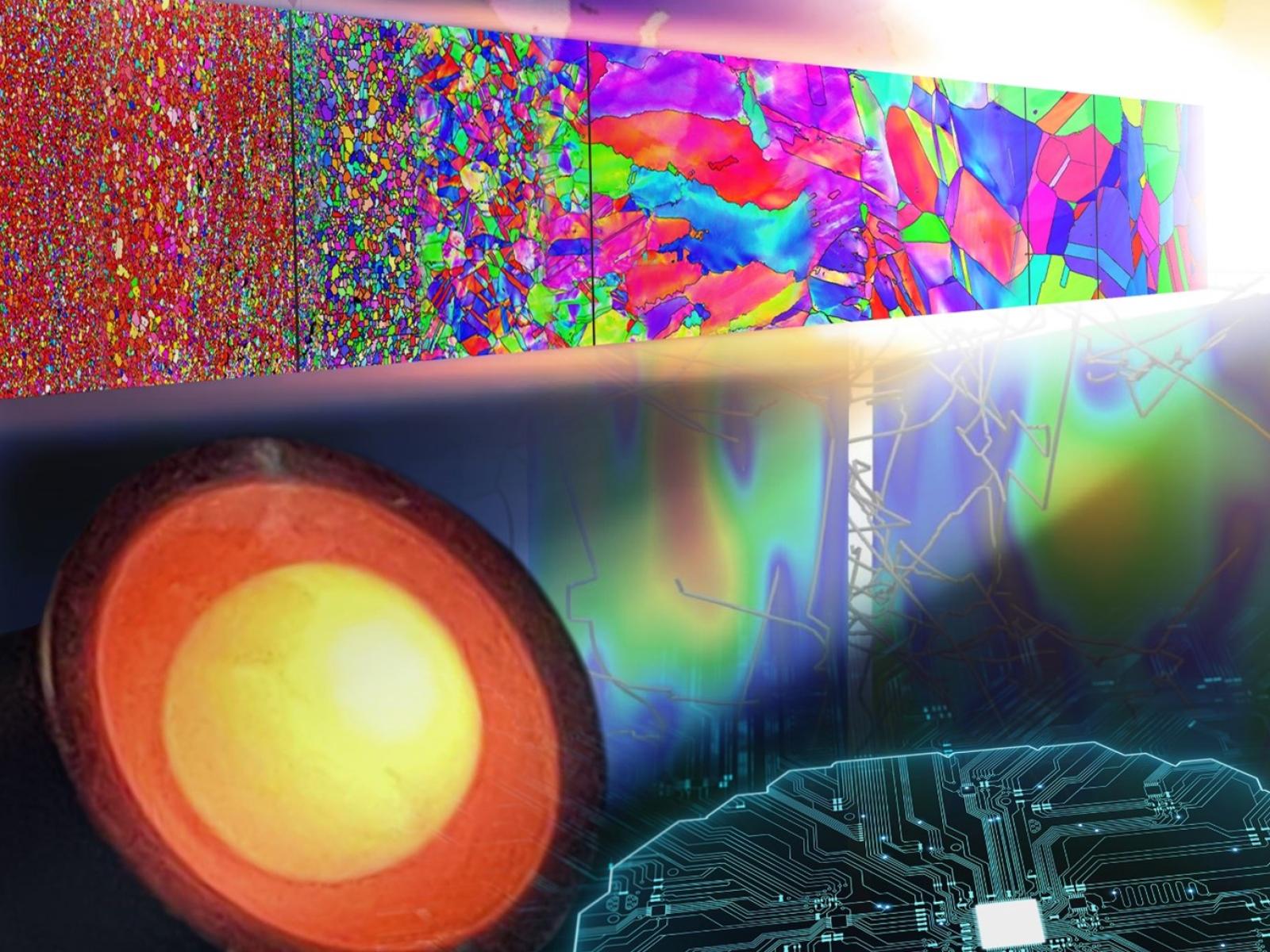Researchers Featured in MRS Bulletin Special Issue
PNNL researchers edited and contributed to special issue focused on materials in extreme environments

Studying how materials behave in extreme environments is essential for a wide range of applications.
(Composite Image by Cortland Johnson | Pacific Northwest National Laboratory)
Developing materials that can withstand extreme environments, like space or nuclear reactors, remains a challenge for materials science. Work from researchers at Pacific Northwest National Laboratory (PNNL) was featured in a new special issue of MRS Bulletin. The issue was co-edited by Mitra Taheri, Chief Materials Scientist for the Physical and Computational Sciences Directorate. Taheri and Daniel Schreiber, a PNNL materials scientist, also participated in a webinar related to the issue in December.
In addition to her editing role, Taheri co-led two articles published in the special issue. One focused on an overview of the research presented in the issue, with a special emphasis on coupled extreme environments. The other discussed using artificial intelligence (AI) for materials research at extremes. AI is particularly powerful for extremes research, as established theoretical frameworks can fail under such conditions. An eventual goal of integrating AI into experimental processes is to develop autonomous experimentation, where the AI leads to rapid decision-making without active human input.
Schreiber co-authored a paper on how to create extreme conditions in the lab and study materials in those systems. The work explores experimental systems for studying materials under extreme temperatures and extreme mechanical stress, and in hostile chemical environments. The researchers identified six key, achievable targets to guide the next decade of instrument and testing developments to better understand materials in extreme environments.
Published by the Materials Research Society, the MRS Bulletin provides monthly overviews of special topics across materials science. In addition to themed technical articles, the journal includes news, industry developments, and policy changes of interest to materials scientists.
“This issue highlights the challenges and opportunities in understanding materials science at extremes and how these are often ‘dual-threat’ environments like corrosive media in addition to high temperatures or radiation,” said Taheri, who holds a joint appointment at Johns Hopkins University. “We’re particularly excited about how AI can help accelerate our understanding of and ability to develop materials, which we introduced in this special issue.”
Both Taheri and Schreiber are involved in the Adaptive Tunability for Synthesis and Control via Autonomous Learning on Edge (AT SCALE) Initiative at PNNL. AT SCALE is working to transform materials synthesis through developing closed-loop autonomous experimentation. The goal of these systems is to enable precision synthesis and processing without real-time human control.
Cindy Powell, Chief Science and Technology Officer for the Energy and Environment Directorate at PNNL, also contributed an article about synthesizing far-from-equilibrium materials for extreme environments to the special issue.
Published: March 14, 2023